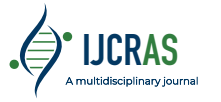| Title: IMPROVING GRADE 10 STUDENTS’ GEOMETRICAL OPTICS THROUGH BLENDED PEEOR (PREDICT-EXPLAIN-ENACT-OBSERVE-REFLECTION) INQUIRY-BASED LEARNING |
| Author: Amssalu Wondmagegn |
| Affiliation: Woldia College of Teacher’s Education |
| Abstract: Purpose: The aim of this study was investigating the impact of blended learning utilizing the PEEOR (Predict-Explain-Enact-Observe-Reflection) inquiry-based approach on Grade 10 students’ conceptual understanding, science process skills, and motivation in geometrical optics. |
| Keywords: GMDH-Shell-DS, Data Handler, Data-Driven Strategies, Student Success, Educational Improvement |
| DOI: https://doi.org/10.61646/IJCRAS.vol.3.issue5.93 |
| Date of Publication: 31-10-2024 |
| PDF Download |
| Download Certificate |
| Published Volume and Issue: Volume 3 Issue 5 Sep-Oct 2024 |
International Journal of Current Research and Applied Studies
An open access multidisciplinary journal, ISSN 2583-6781
